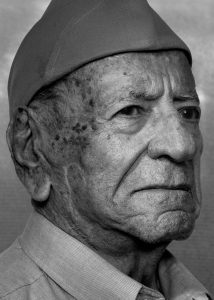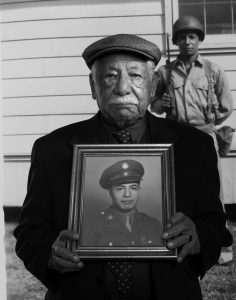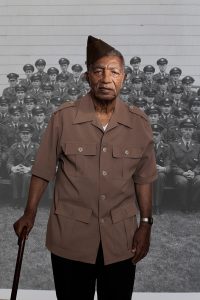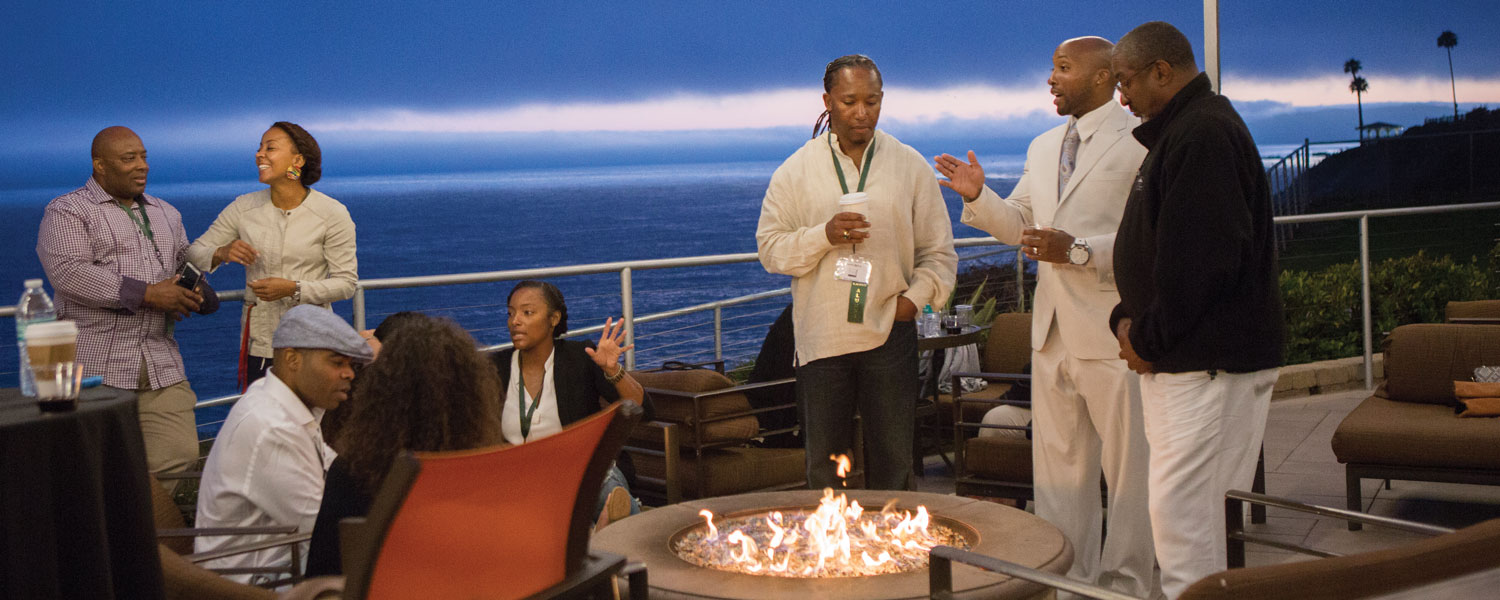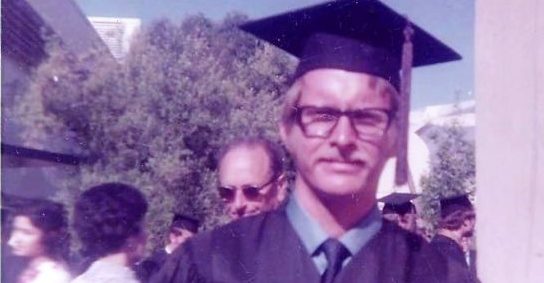alumni
Memories of ‘The Last Good War’
By Susan Kostal
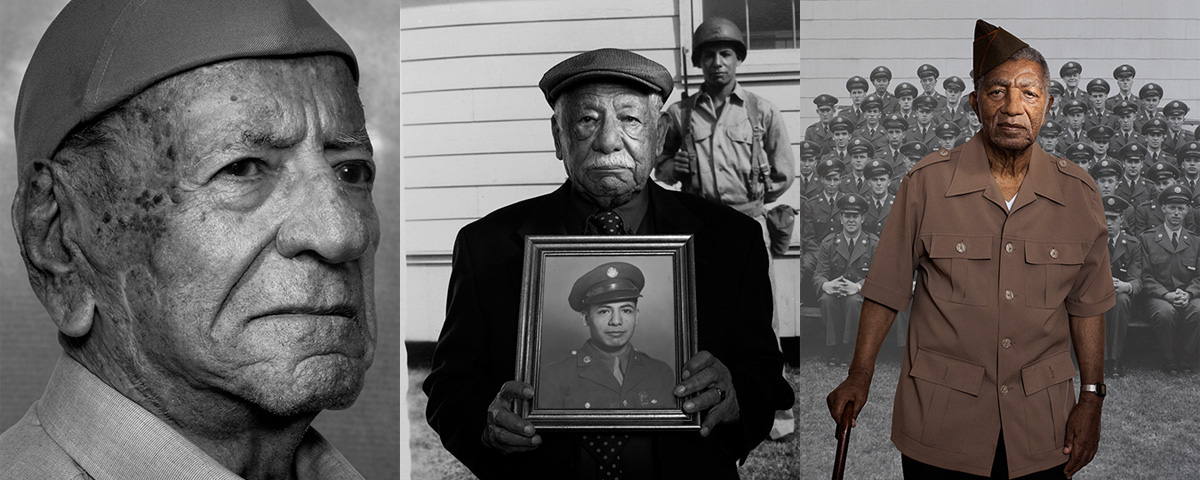
Tom Sanders (Art and Design, ’06) photographed his first World War II veteran for a Cal Poly stock photography class. To complete his assignment, he visited The Villages retirement community in San Luis Obispo, thinking he would find some strong portrait subjects.
He couldn’t have been more right.
At The Villages he met a 91-year-old former Army Ranger named Randall Harris. Harris had gone skydiving on his 90th birthday — a certifiably interesting man. He told Sanders the story of his service in Italy. “His company commander triggered a landmine and died instantly. Harris triggered one and took the hit in his gut and lower leg. He took off his canteen belt, tied it around his stomach, and kept on fighting,” Sanders said. “I’m pretty sure I got an A on that photo.”
Sanders kept photographing veterans of the war in his spare time, and very soon Belmont Village Senior Living, which owns retirement communities across the country, discovered his project and commissioned him to photograph veterans living at its facilities nationwide. “I was able to shoot what I was passionate about and get paid for my work before I even graduated,” he said.
What’s more, each photo he took was exhibited in the halls of the retirement communities, a luxury for any artist. “A photographer might take hundreds of photos for a show, only to have just 10 presented in an exhibition,” he said.
That was 12 years and 1,200 veterans ago. Since then, Sanders has built the largest modern-day portrait collection of WWII veterans. “I’ve been to more than 40 cities in the last year,” he said.
In 2010, Sanders’ published his collection in a coffee table art book, “The Last Good War: The Faces and Voices of WWII,” featuring photographs of 152 veterans with quotes and snippets of their stories. It was named Nonfiction Book of the Year by Forewords Review magazine.
Time is of the essence as Sanders continues his project. “Most WWII veterans are 91 or a little older now,” he said. “Some have Alzheimer’s or are too weak to stand. Someone will help them stand for the photo, and then I’ll Photoshop that out. I want them to look strong and healthy, even if they can’t remember their children’s names.”
Sanders has branched into other areas of photography and film in his work for advertising agencies, but his work with veterans continues. He plans a second photography book of veterans from all U.S. wars.
“The idea is that people see my portraits, become emotionally enthralled, read their stories, and develop a greater appreciation of veterans,” said Sanders.
Though he comes from a family of photographers and graphic designers, Sanders credits Cal Poly with giving him such a strong start in his field. “Cal Poly offered an affordable photography program instead of some insanely expensive art school,” he said. “Most art kids don’t have guaranteed work after school, and I did.”




